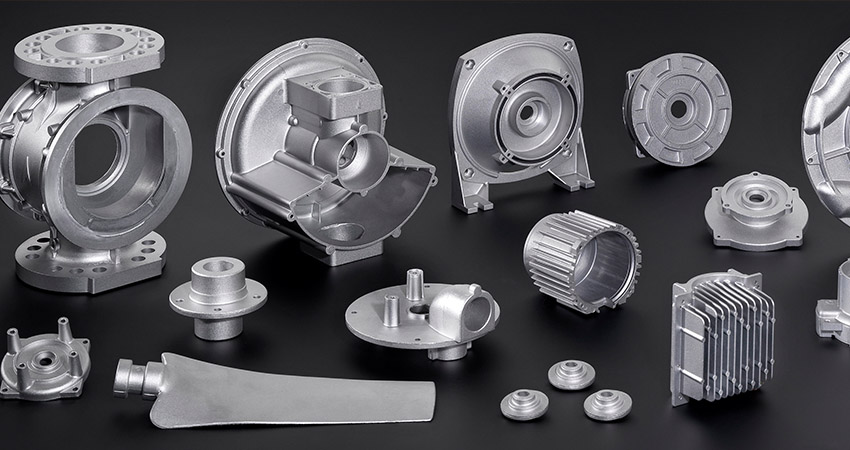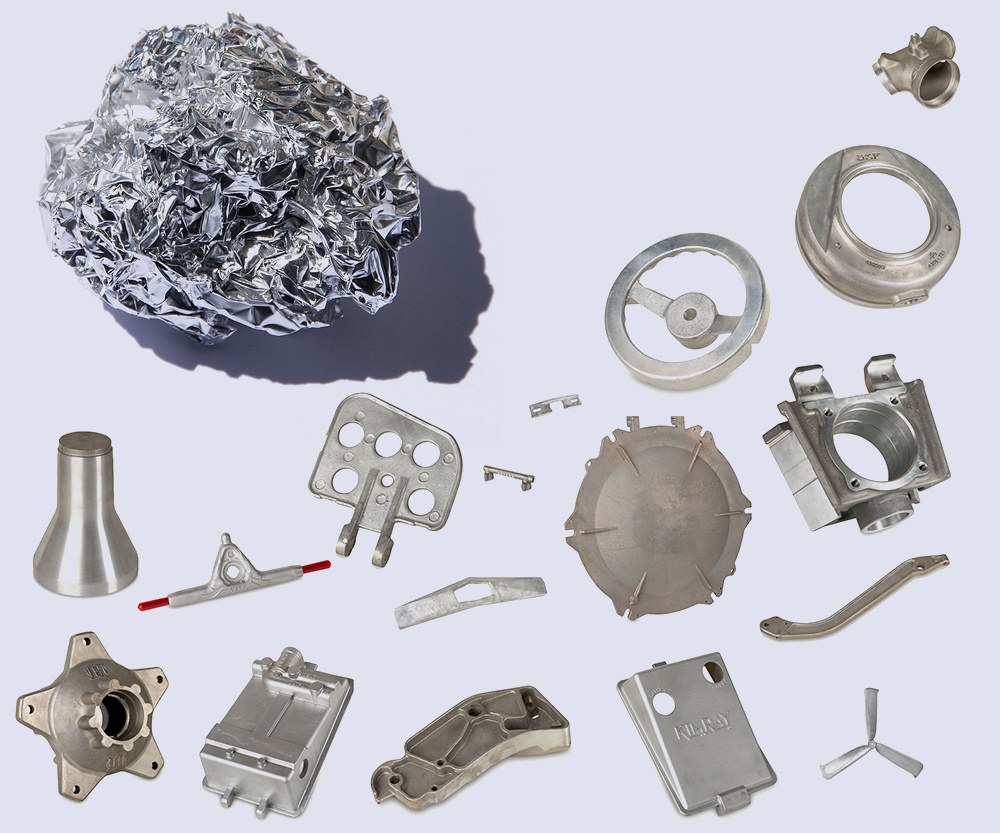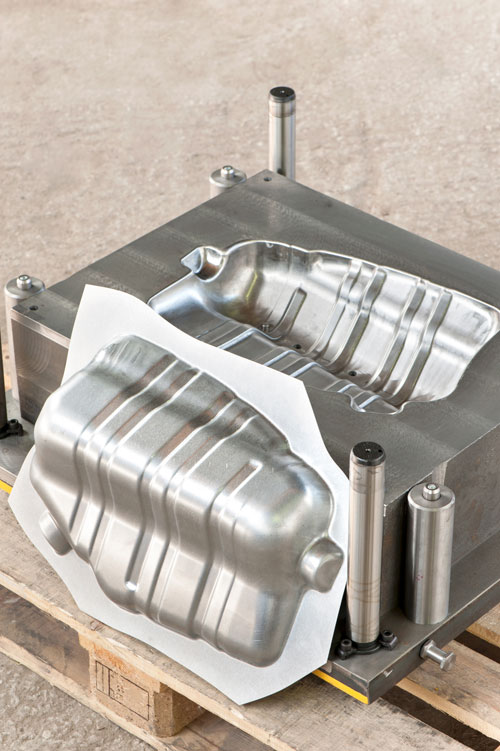How to achieve flawless results with Precision aluminum casting
Recognizing the Procedures Associated With Aluminum Casting for High-Quality Manufacturing
The aluminum casting process is a facility yet essential procedure for attaining high-quality production. It involves a number of phases, consisting of mold and mildew prep work, melting, pouring, and air conditioning. Each step needs cautious attention to detail to guarantee and stay clear of flaws consistency. Comprehending these treatments can significantly affect the last item's integrity. As one analyzes the nuances of mold and mildew selection and air conditioning strategies, the importance of each element ends up being progressively clear. What aspects absolutely determine success in this intricate procedure?

The Aluminum Casting Process Overview
The aluminum casting procedure is an extensively utilized production method that changes molten aluminum right into numerous forms and components. This process starts by warming aluminum till it gets to a liquid state, enabling it to stream quickly into molds. Depending upon the wanted output, different casting approaches can be utilized, consisting of sand casting, die casting, and investment casting. Each method has its special advantages and applications, influencing elements such as production quantity, dimensional accuracy, and surface coating.
Once the aluminum is put into the mold and mildew, it cools and solidifies, handling the shape of the cavity. After cooling down, the cast item is removed from the mold and mildew, frequently requiring added procedures like cutting, machining, or surface therapy to achieve the final requirements. On the whole, the aluminum casting process is important in generating long lasting and detailed components for numerous industries, including automobile, aerospace, and durable goods.
Preparing the Mold for Casting

Mindful prep work likewise includes cleaning the mold to eliminate any kind of impurities that can affect the casting process. A thorough examination assurances that all parts fit together effectively, preventing imbalances throughout pouring. Additionally, applying a launch agent can aid relieve the removal of the finished item.
Eventually, meticulous focus to detail throughout mold and mildew prep work sets the foundation for a successful casting operation, influencing factors such as dimensional precision and surface top quality of the aluminum elements created.
Thawing and Pouring Aluminum
Efficient melting and pouring of aluminum is crucial for accomplishing top notch spreadings. The procedure begins by selecting the appropriate heating system, which must supply effective warmth transfer and keep regular temperatures. Numerous kinds of heating systems, such as induction or crucible heating systems, can be utilized based on manufacturing demands and quantity.
The aluminum must be heated up to its melting point, typically around 660 degrees Celsius (1220 degrees Fahrenheit), while making certain minimal oxidation and contamination. To boost high quality, additives may be introduced to improve fluidity and minimize impurities. Once fully melted, the aluminum ought to be held at a stable temperature level before putting.
Pouring requires accuracy to avoid issues such as air pockets or additions. Using pouring ladles and controlled putting techniques adds to a smooth flow right into the mold. Proper implementation of these steps is important for generating spreadings with maximum structural stability and surface area coating.
Cooling and Solidification Methods
After pouring, the air conditioning and solidification of aluminum play a crucial role in determining the final residential properties of the casting Source (Precision aluminum casting). Effective air conditioning strategies directly affect the microstructure, mechanical homes, and dimensional accuracy of the end product. Usual techniques consist of forced air cooling and water spray, which promote uniform temperature distribution and reduce thermal gradients
The solidification procedure begins as the molten aluminum sheds heat, moving from fluid to strong. The rate of cooling influences grain size; slower cooling can bring about bigger grains, possibly go to these guys decreasing stamina. In addition, using cools-- steel inserts that take in heat-- can improve cooling rates in details locations, enhancing total honesty.
Regulated cooling systems are frequently applied to accomplish desired homes, such as improved ductility or strength, by managing the cooling curve. Proper techniques guarantee trustworthy aluminum spreadings that fulfill rigid industry criteria.
Finishing and Top Quality Control Measures
Finishing and quality assurance steps are vital to guarantee that aluminum spreadings fulfill the called for specifications and performance criteria. After the casting procedure, parts undertake numerous ending up operations, including machining, grinding, and sprucing up. These processes improve surface top quality, dimensional precision, and general looks.
Quality control steps play a pivotal duty in guaranteeing product integrity. Evaluation techniques such as aesthetic evaluations, dimensional checks, and non-destructive testing are utilized to determine flaws like porosity, surface area abnormalities, or dimensional inaccuracies. In addition, extensive paperwork of each phase of production assists trace any issues back to their source, enabling constant improvement.
Employing analytical process control (copyright) more guarantees that production procedures continue to be within specified restrictions, enhancing consistency and reliability. By integrating finishing methods and stringent quality assurance actions, makers can attain premium aluminum castings that satisfy both sector standards and consumer assumptions.
Often Asked Questions
What Sorts Of Aluminum Alloys Are Best for Casting?
The most effective aluminum alloys for casting include 319, 356, and 413, known for their exceptional fluidity, rust resistance, and strength - Precision aluminum casting. These alloys are typically utilized in automotive, aerospace, anonymous and numerous commercial applications for resilient elements
How Does Temperature Level Affect Aluminum Casting High Quality?
Temperature level substantially affects aluminum casting top quality; greater temperatures can enhance fluidity however may lead to oxidation, while lower temperature levels improve information but rise thickness. Attaining perfect temperature levels is vital for stabilizing these opposing effects during casting.
What Prevail Problems in Aluminum Castings?
Common issues in aluminum spreadings include porosity, shrinkage, inclusions, cool shuts, and surface area roughness. These issues develop from factors such as incorrect temperature control, contamination, and inadequate mold and mildew layout, impacting the last item's honesty and performance.
Can Aluminum Casting Be Recycled?

Exactly How Does Aluminum Casting Contrast to Other Manufacturing Approaches?
Aluminum casting offers remarkable design versatility and product effectiveness contrasted to methods like creating or machining. aluminum casting. Its ability to generate elaborate forms minimizes waste, improving overall production effectiveness while maintaining high-quality standards in completed items
The aluminum casting process is a complicated yet important procedure for accomplishing top notch production. The aluminum casting procedure is a commonly utilized production method that changes molten aluminum right into numerous forms and parts. Preparing the mold for casting is an essential action that directly influences the top quality of the last aluminum item. Completing and high quality control procedures are vital to ensure that aluminum spreadings satisfy the needed requirements and performance requirements. Temperature greatly influences aluminum casting quality; higher temperature levels can enhance fluidity however might lead to oxidation, while lower temperature levels enhance information yet increase viscosity.